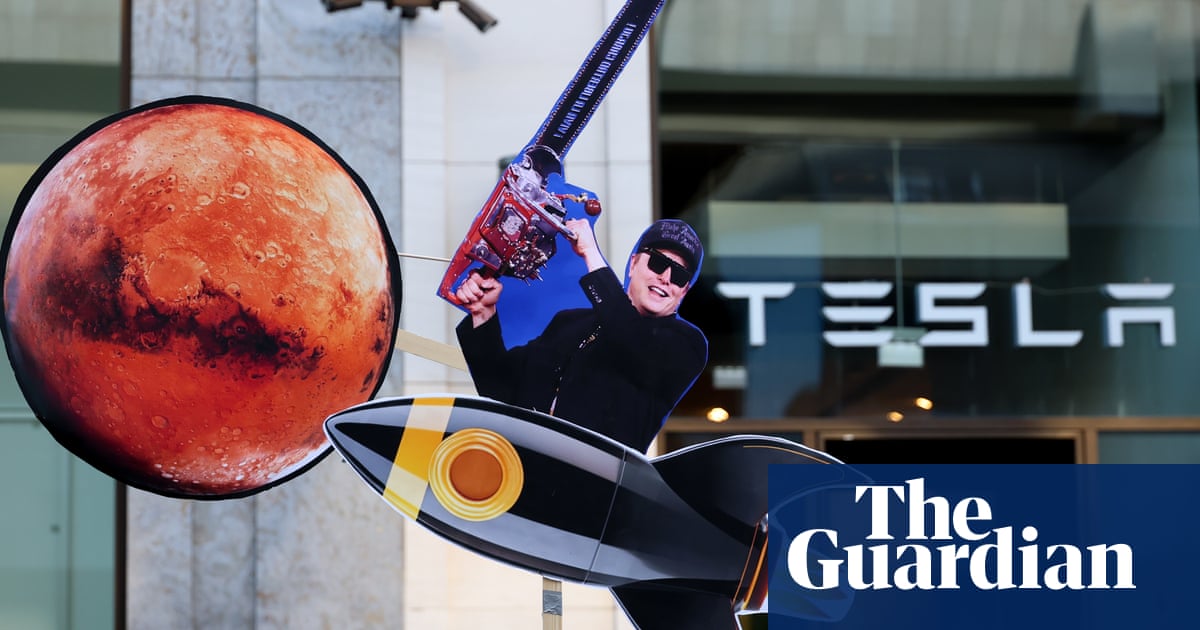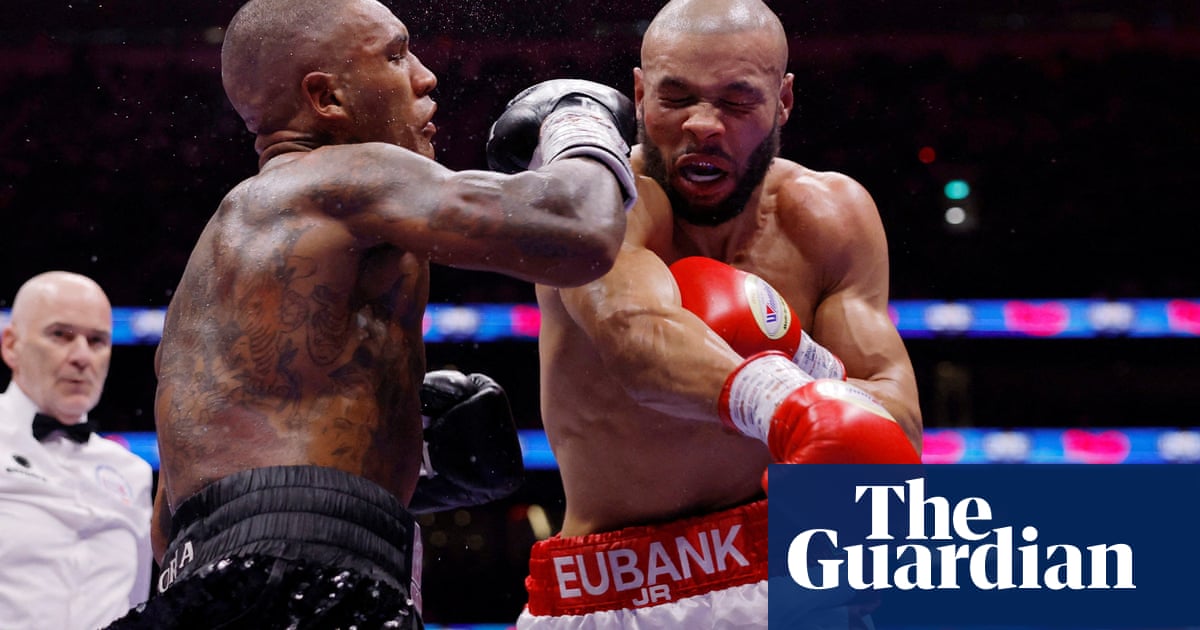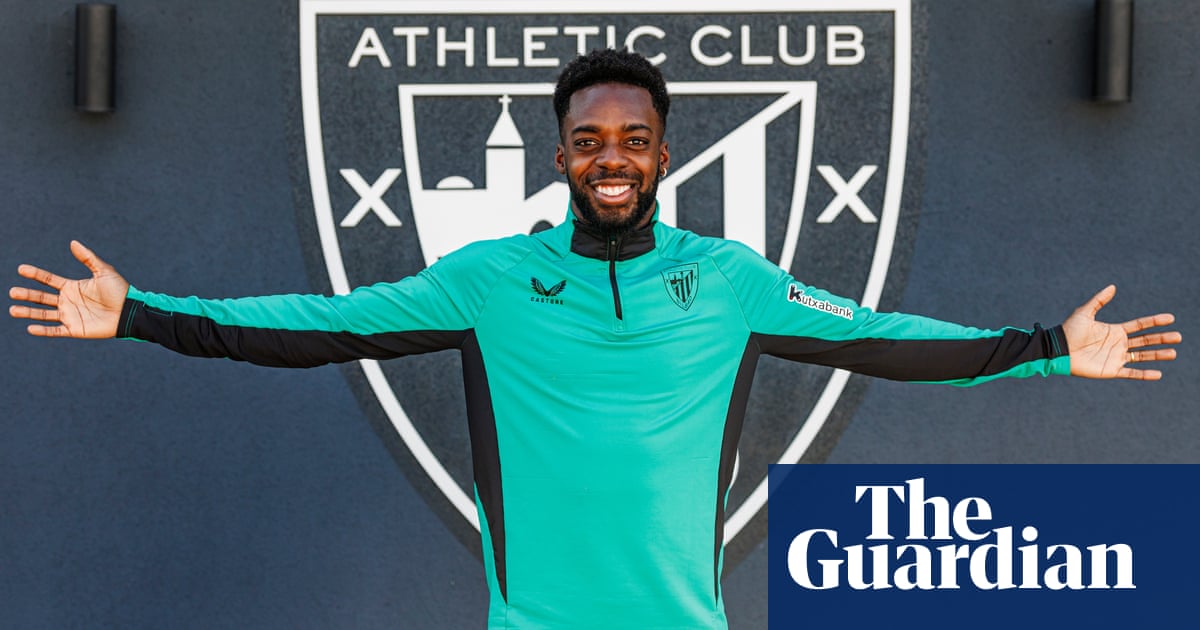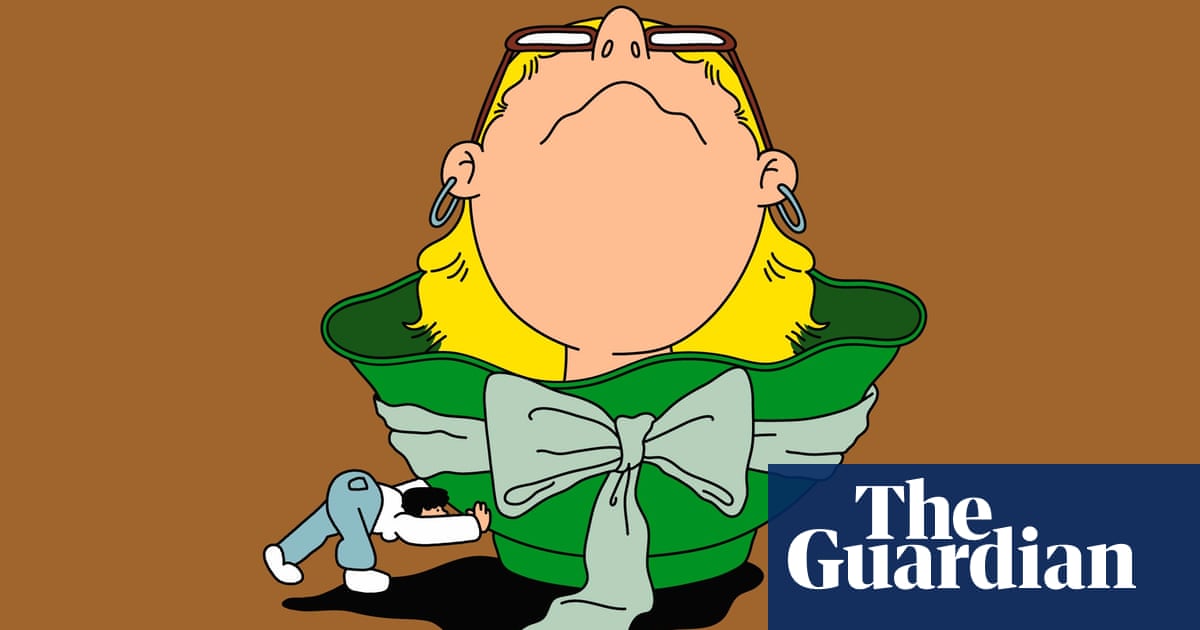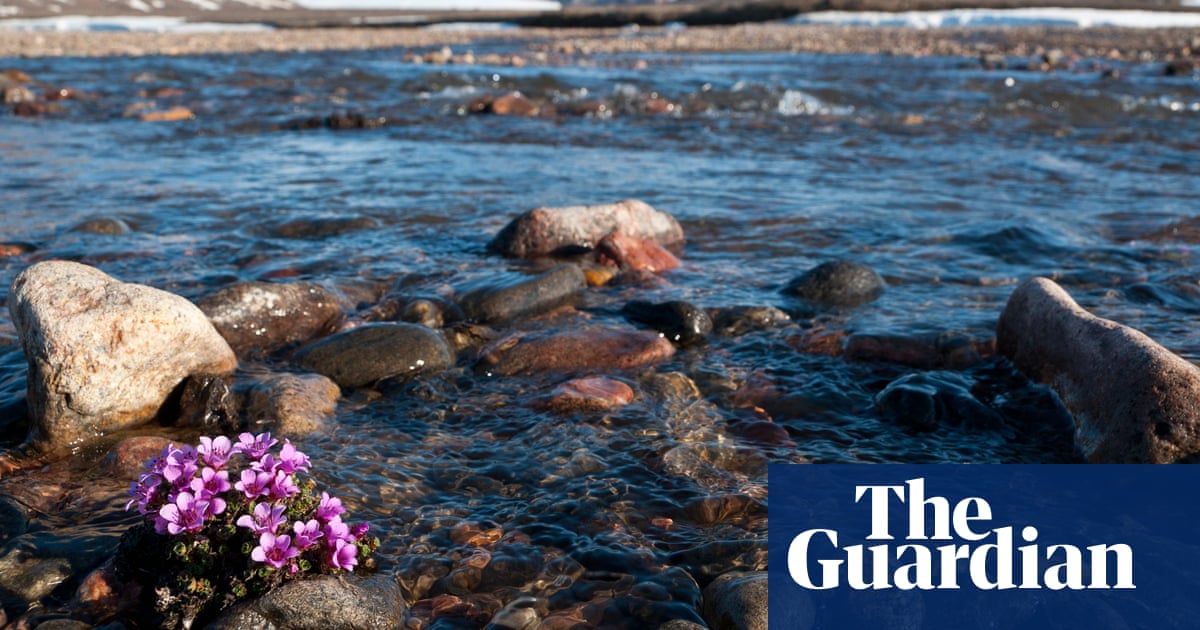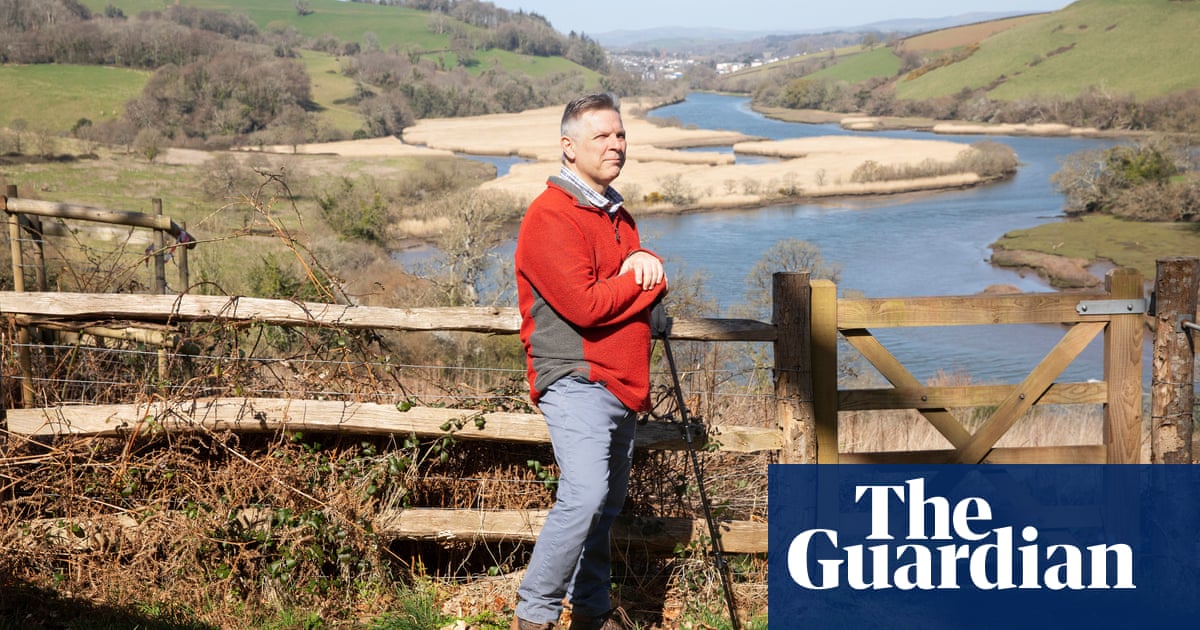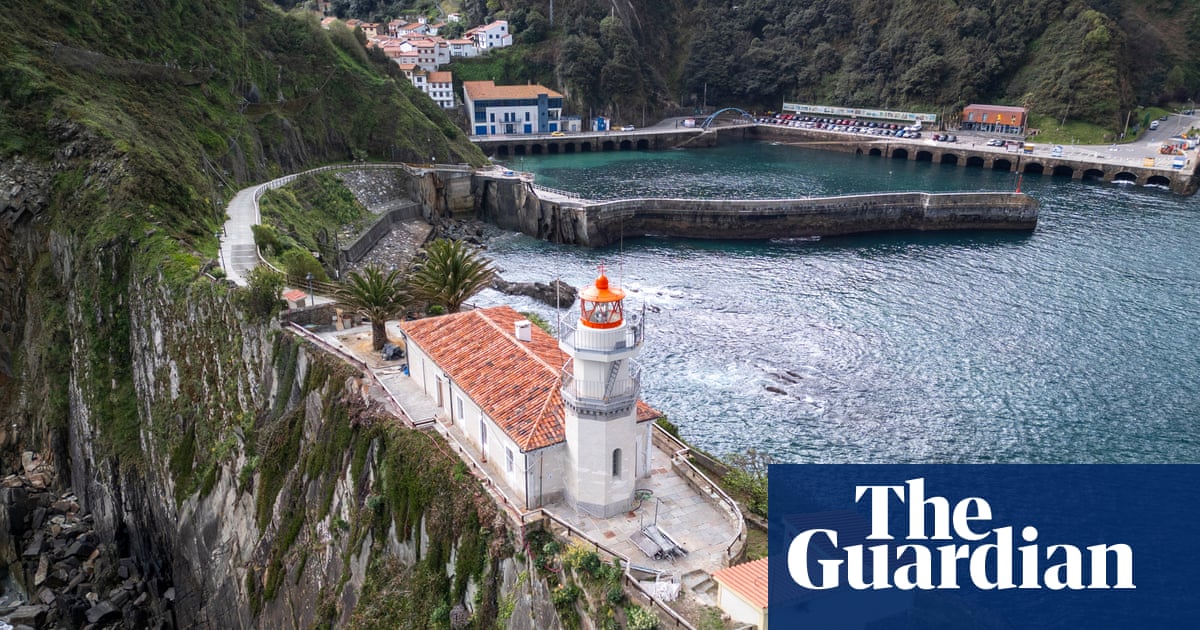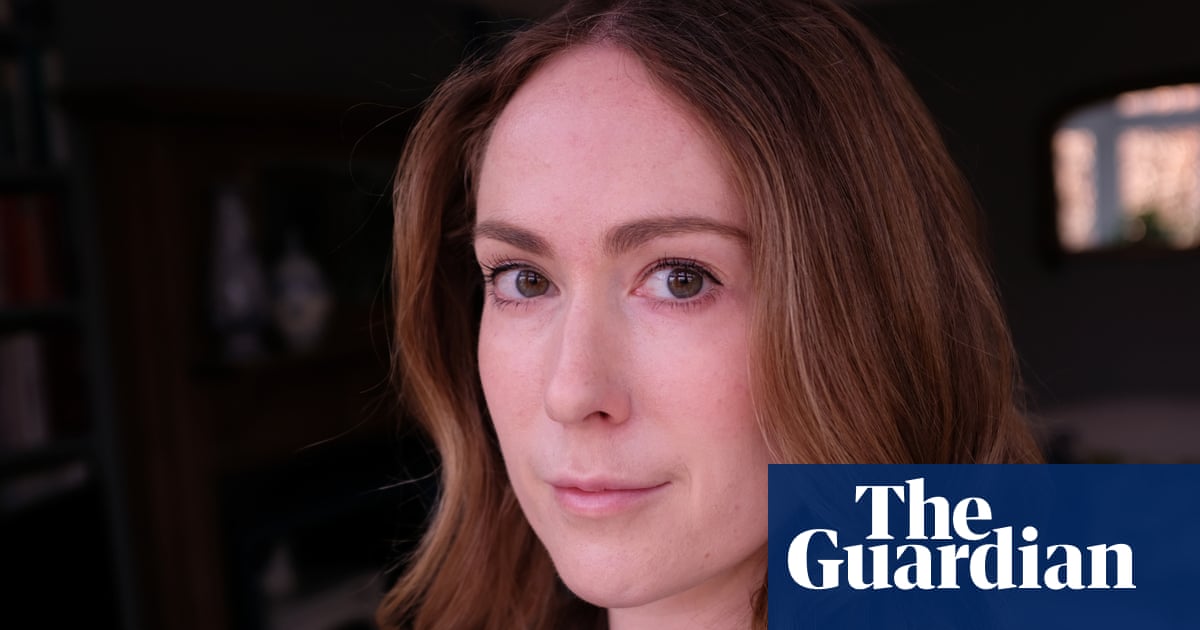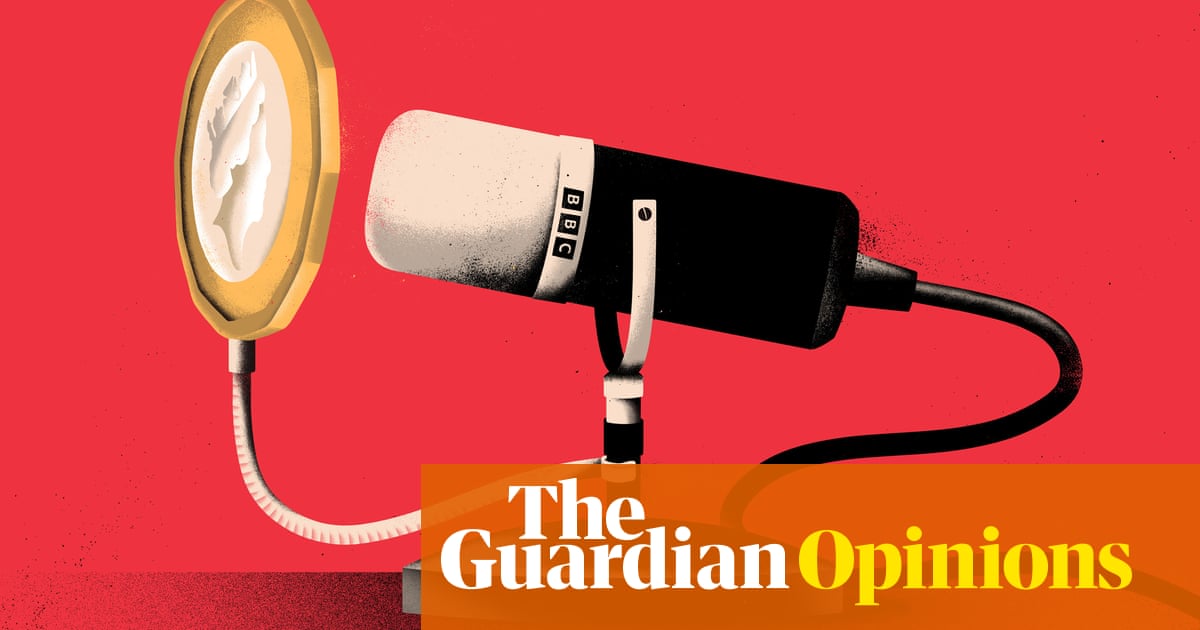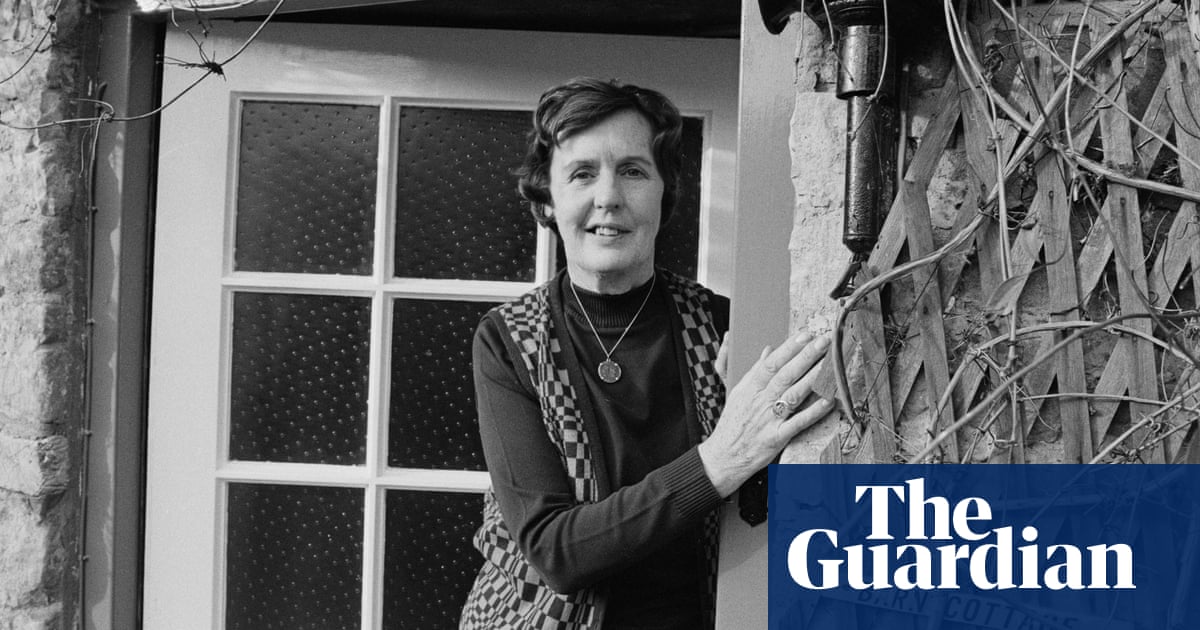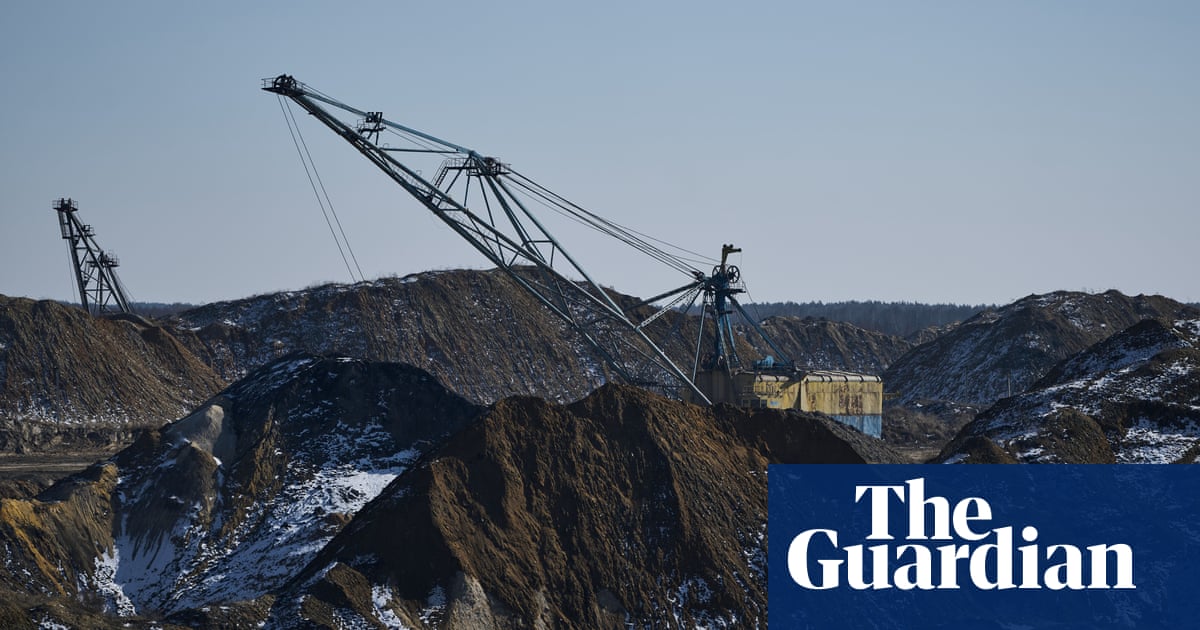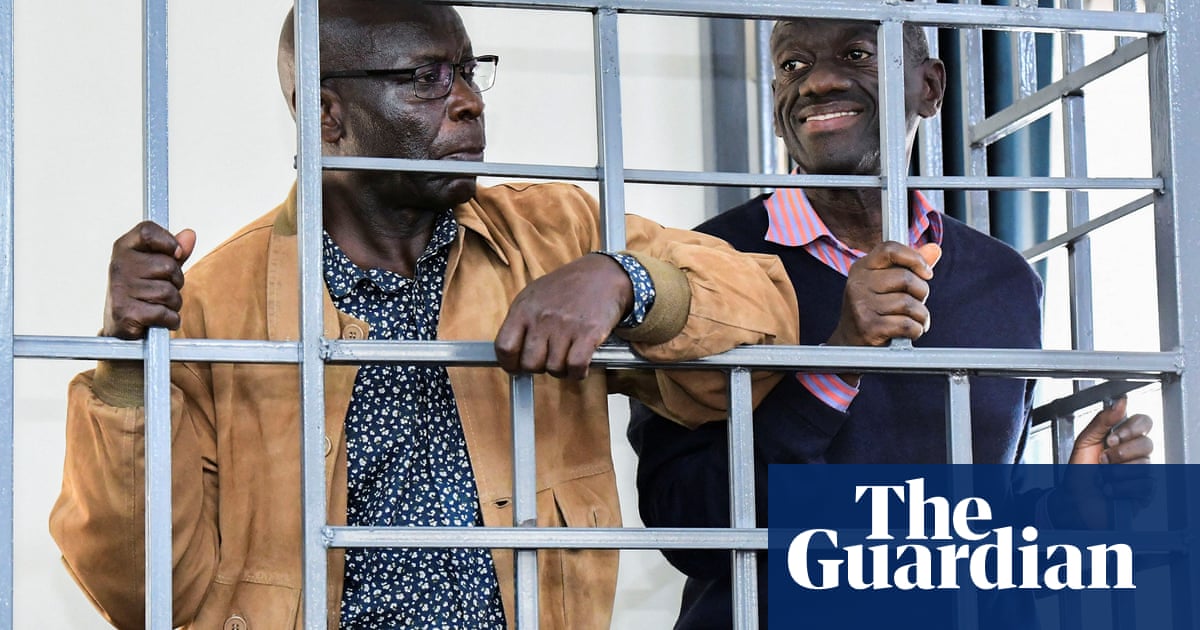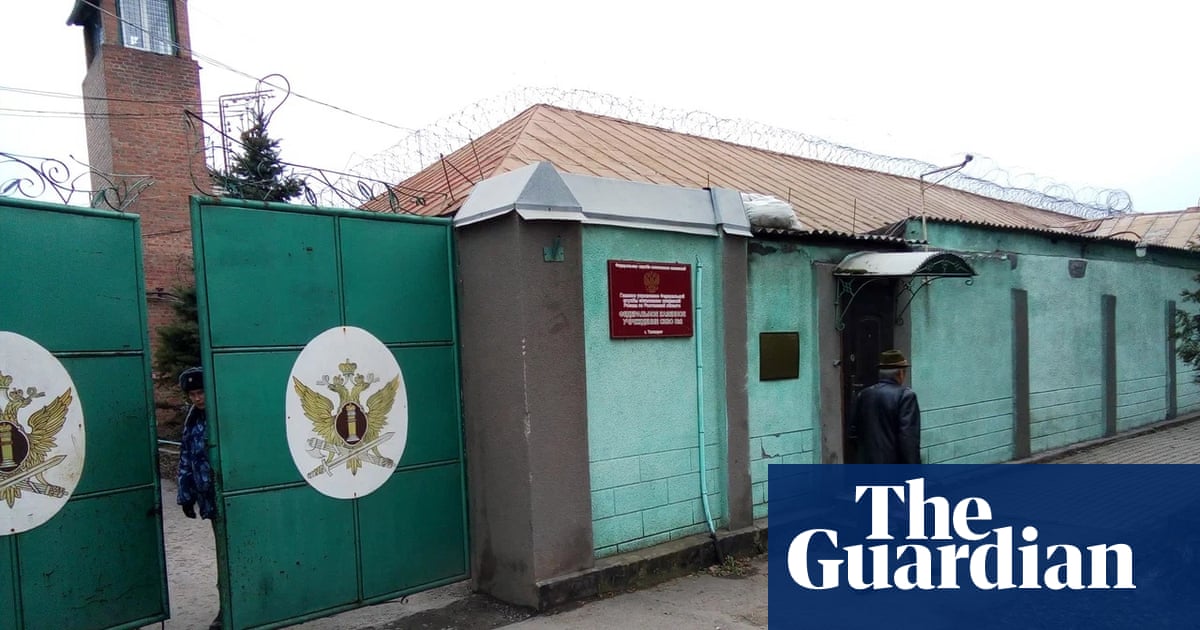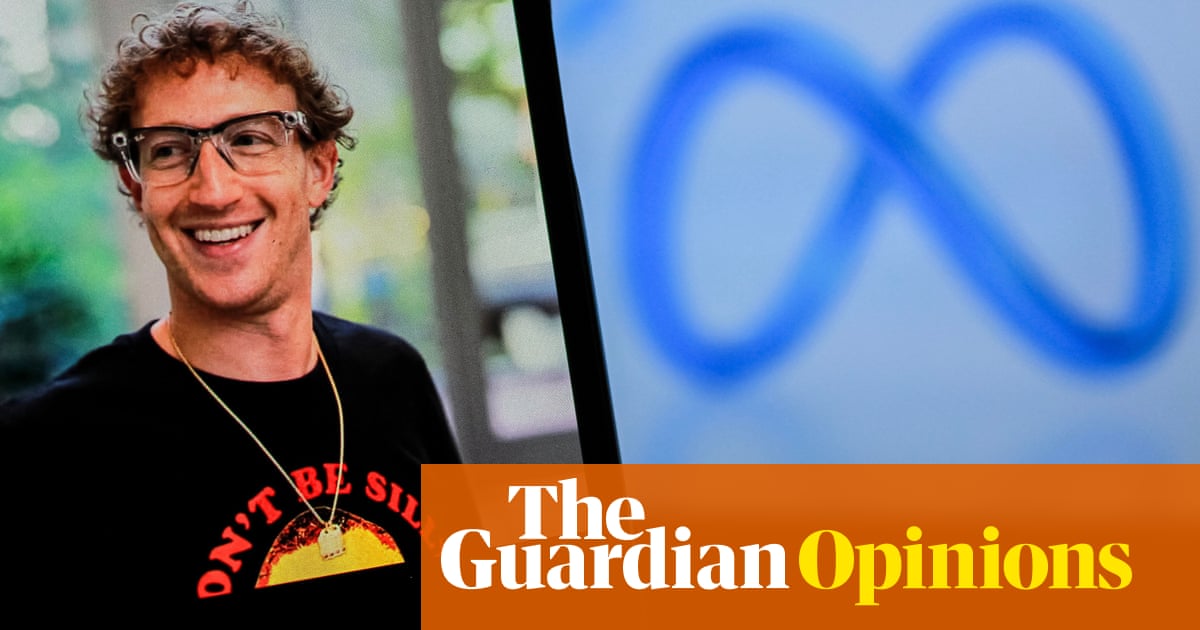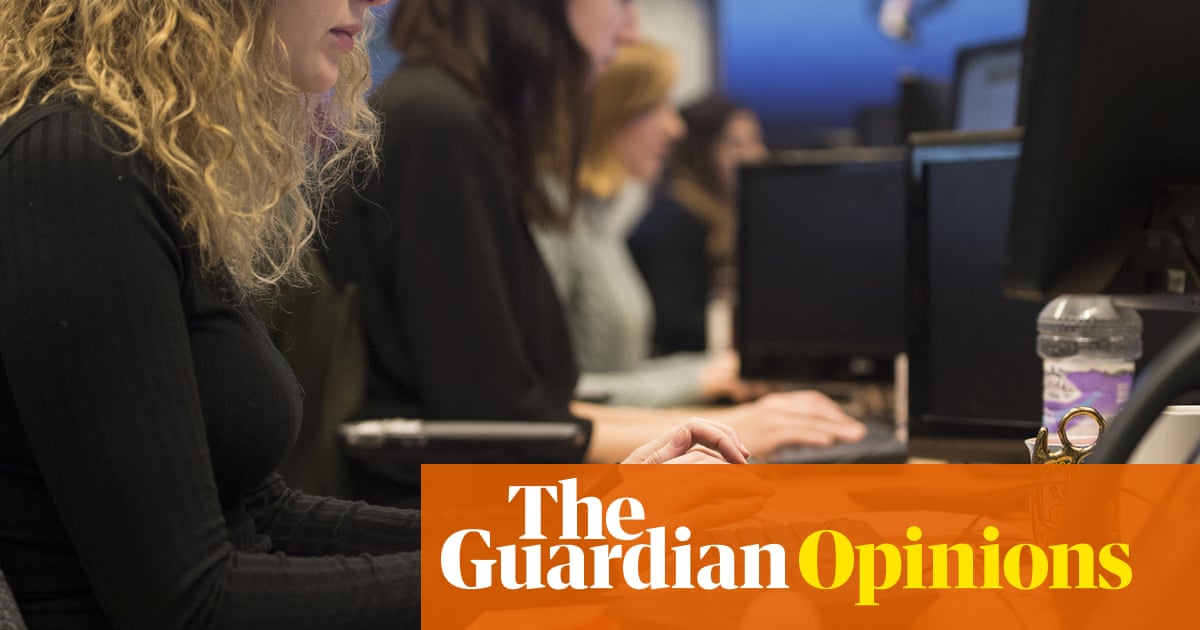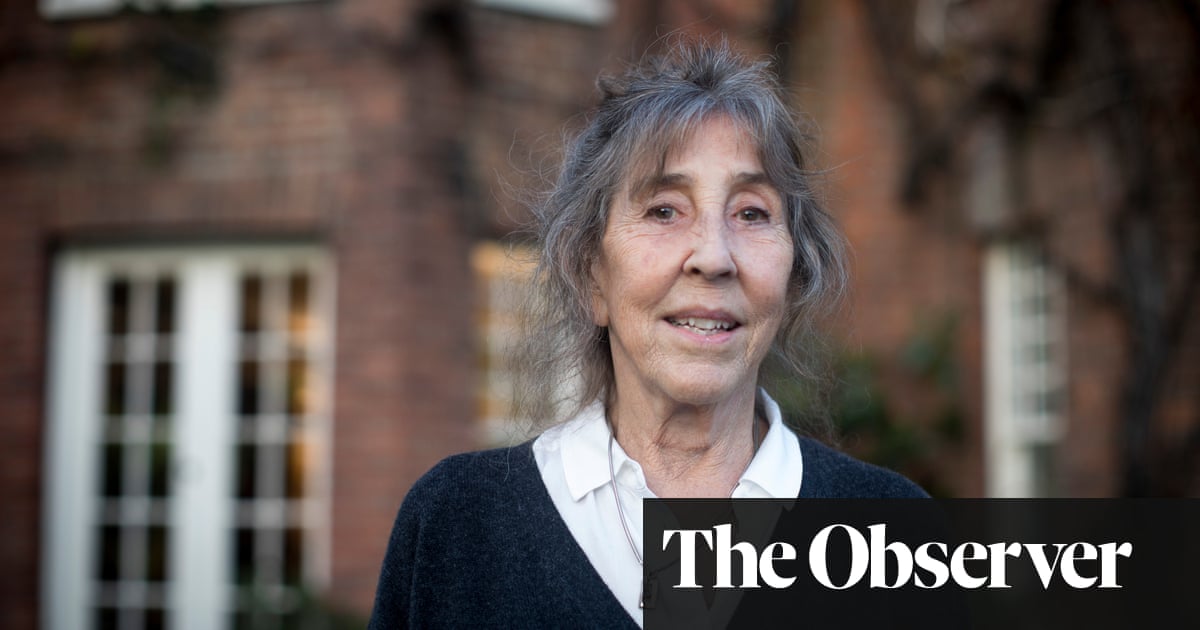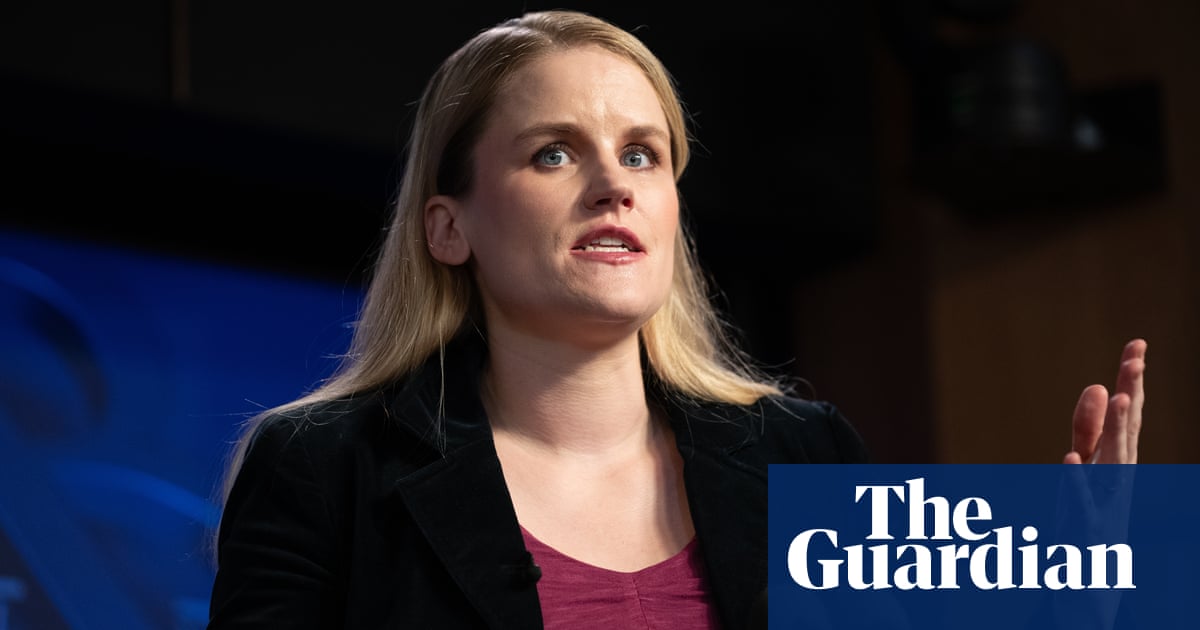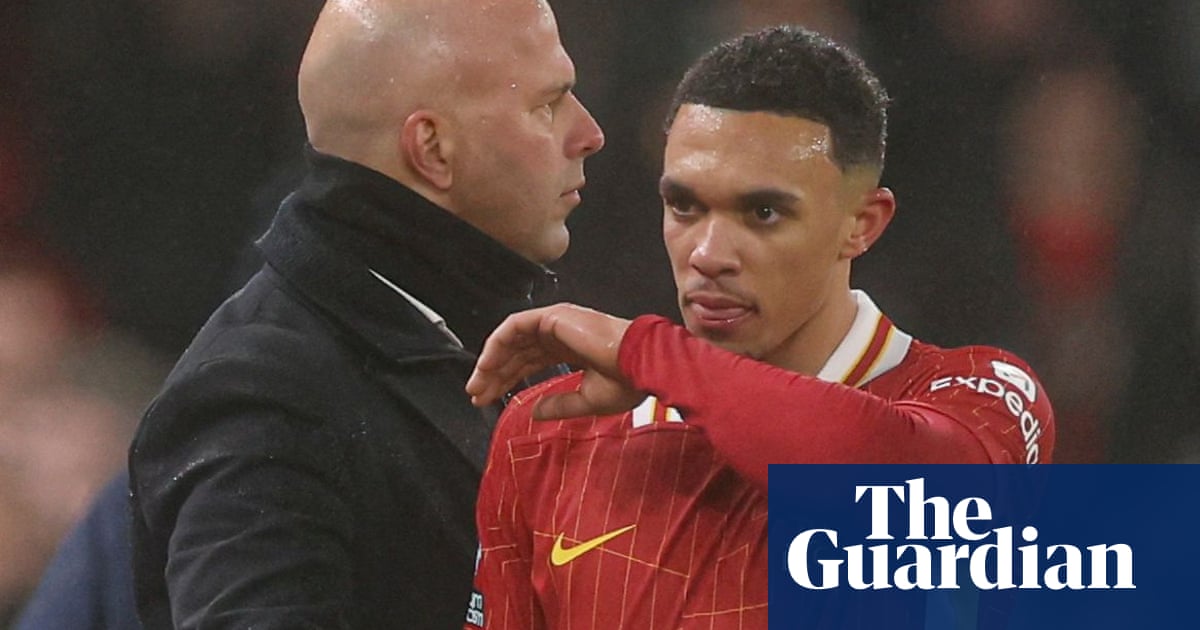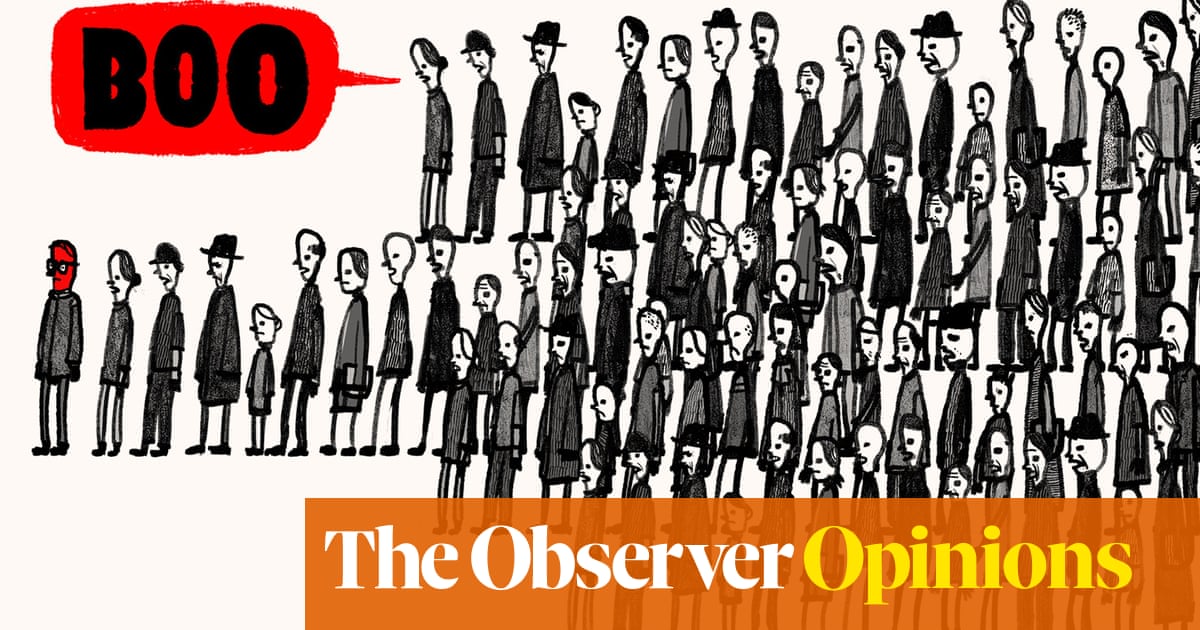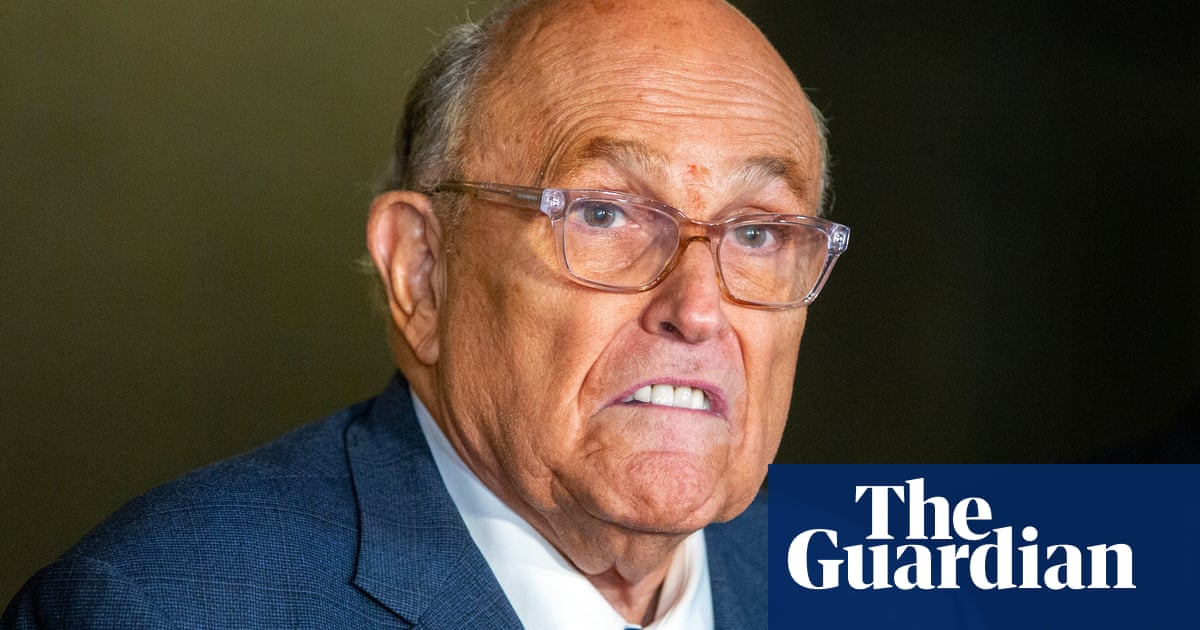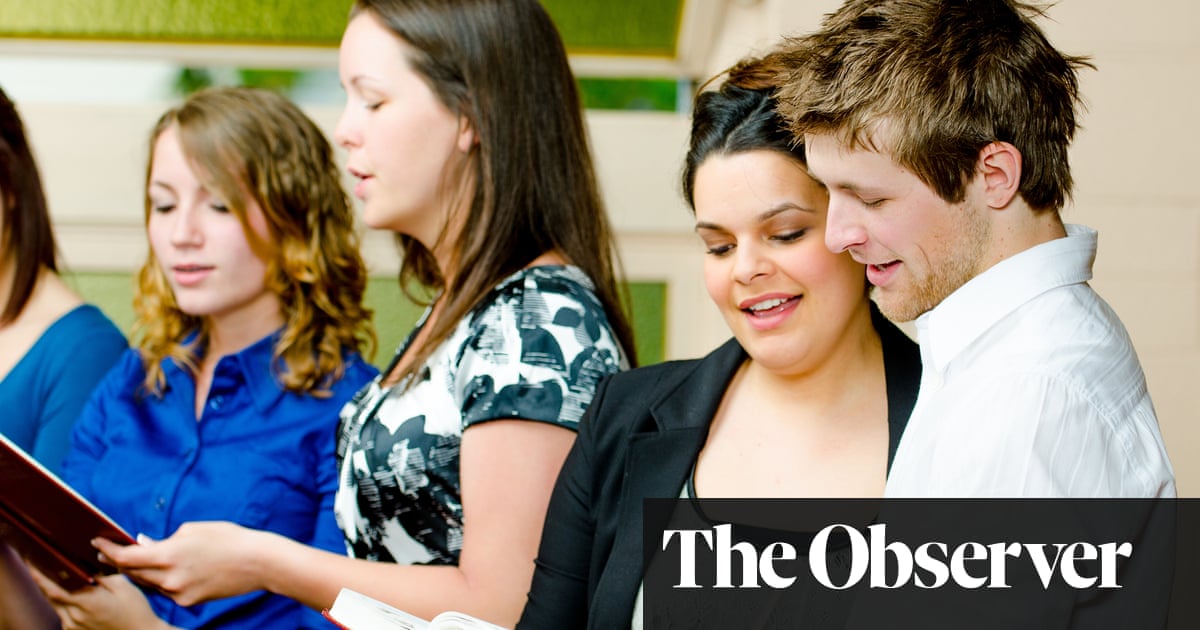Louise Bourgeois’s spider opens the museum (2000)
Frances Morris, then head of displays

“Louise Bourgeois symbolised what I wanted Tate Modern to be: a place where you would have extraordinary encounters with artists who weren’t in the canon. She proposed an installation with three towers for the Turbine Hall and we suggested also borrowing a small group of her spiders to put on the ramp down into the hall, to lure people in. She said, ‘No, no, no – I’ll make you a spider.’ It was all very last minute: we had to finish installing Maman, as this giant new spider was called, during the very first opening event, which was for London’s taxi drivers. I spent the next few years meeting taxi drivers who’d say: ‘You weren’t involved with that spider woman, were you?’” (Dale Berning Sawa)
Anish Kapoor installs a giant trumpet (2002)
Phil Monk, senior design and production manager

“This took several weeks and a huge number of people to install. The first phase was the assembly of the three huge steel rings that formed the structure of Marsyas. They were tricky to get into place. Then there was the giant red vinyl membrane that had to be carefully and slowly stretched around the steel. It arrived in one huge piece, so it was a major feat of engineering, spreading it across the whole floor, stretching it around the rings, getting the tension right. It took a really big blowtorch to soften the fabric. The finished work filled virtually the whole hall. Only on moving around the building could the full scale be seen. When viewed on the bridge, you were almost engulfed. You could imagine being Jonah or Pinocchio about to be swallowed by a whale.” (Eddy Frankel)
Olafur Eliasson unveils a setting sun (2003)
Olafur Eliasson, artist

“When I was approached about doing something, I immediately thought about the relationship British people have with the weather. Someone can say ‘I like the rain’ and someone else can say ‘I prefer the sun’ and they can still be friends. Whereas if this was football teams, they couldn’t even be in the same pub! I was also interested in Turner and Constable and the tradition of depicting the weather in British watercolours. My idea was to recreate a setting sun, where you see half of it in the sky and the other half reflected in the sea. We used very thin aluminium mirrors to achieve this. Compared to some of my other projects, it wasn’t technically difficult. I did not anticipate the social spectacle it became. I thought people would be looking with their eyes but instead they looked with their bodies: lying down, rolling around, making shapes in the giant reflection. The BBC even reported the weather from Tate Modern!” (Tim Jonze)
Doris Salcedo puts a long crack in the floor (2007)
Doris Salcedo, artist

“The memory of this work is painful. It was, and still is, a wound inflicted on the Turbine Hall. It was an excruciating gesture for all the parties involved – Tate director Nicholas Serota’s job was on the line because of the nature of the piece. As the first artist from the global south invited to do a Turbine Hall commission, it was essential to raise our voices and respond to colonial history – it felt as serious as life or death to me. It represents the division in our world, which unfortunately only keeps growing.” (Charlotte Jansen)
An enormous salad is mixed with a rake (2008)
Catherine Wood, curator
“In the 1960s, Alison Knowles, who was a founding member of the Fluxus movement, had done an iteration of this piece at the ICA, tossing a salad in a pickle barrel. She proposed to supersize it. First there was a funny visit to nearby Borough Market, where Alison was like: “I’ll have all your lettuces.” Also tomatoes, cucumbers – she wanted it to taste good. During the event, she was quite performative, announcing what was happening. Chefs from the museum chopped the veg into crates on the bridge, then tossed it down on to a tarpaulin on the Turbine Hall floor and poured down the dressing from a jug. There was a big crowd, 500, maybe 1,000, people. Everyone cheered. She used a garden rake to mix it and people got little bowls to eat from. The museum was built on the principles of what those artists in the 1960s did with participation and access and play. So this was a thrill.” (DBS)
Nan Goldin does The Ballad of Sexual Dependency (2008)
Patrick Wolf, musician

“I had just moved into a flat opposite the Tate Modern, when I got the call from Nan. She had given me a copy of her book, The Ballad of Sexual Dependency, four years earlier. It felt like such an honour to be asked to make the first ever soundtrack to this visual diary. Nan was very trusting. She knew I’d respect the work. And I knew where it was coming from. When I was a teenager, I was part of a crowd in London that was similarly disturbed by what they had experienced, either through addiction or death. At the beginning, Nan gave a speech. The piece started with a tubular bell and a double bass, and a sense of silence took over, a weight came over the room. We had orchestral timpani and a string quartet. I played the harpsichord. At the end, Nan was very emotional and crying. As with everything at the Tate, there’s a party afterwards, which felt quite strange after something so heavy. I remember walking with Nan outside at the back of the Tate and us just saying thank you to each other.” (DBS)
Tania Bruguera kettles people with horses (2008)
Catherine Wood, curator

“Tania always said this performance piece – which was an idea she had never realised – would be like a gunshot, a surprise. Our health and safety and security officer at the time had a contact in the Met. Tania asked the officers to perform six crowd-control exercises normally used in riots. At first, they were friendly to the crowd but she asked them to stop. The horses’ hooves clacking on the concrete was echoing around the space and when the police got into their role, you heard them barking instructions. The crowd went quite quiet. I was there with my six-month-old son. People were both complying and marvelling at the strange, surreal spectacle. The horses dumped on the floor, which was great as well. There is a tradition in art of doing variations of Piero Manzoni’s Merde d’artiste.” (DBS)
Picture of Brooke Shields naked removed by police (2009)
Catherine Wood, curator
“Richard Prince’s Spiritual America had been shown before and had become iconic and familiar in the art world. By reclaiming Gary Gross’s photograph of a naked, 10-year-old Brooke Shields, Prince was clearly referencing the way capitalism sexualises young women and girls. We didn’t question the acceptability of showing it. We had also been in touch with Brooke Shields. She had a conflicting relationship with the image, but after working with Prince on a follow-up had become reconciled to it. Nobody from the public lodged a complaint, but we were advised by the police that we had to take it down or our director could be liable for prosecution under the child protection act. At the time, we were shocked. We thought the police were being very literal. But it does all look very different today. The mass access that Tate Modern gives to art is different even to New York museums, where people have to pay to enter. When you step outside the protected zone of the art world, who read the artist’s “move” through his conceptual intent, the image looks very different. These days, we have a much more robust process of assessing sensitive content. Today, we would know what is and isn’t possible long before the work ended up on the gallery wall.” (TJ)
Bodyspacemotionthings causes joy – and injuries (2009)
Kathy Noble, former interdisciplinary curator

“I’d come across these images of an installation Robert Morris made in Tate Britain in 1971. They were of people climbing and balancing on plywood sculptures and were really surprising. Back then, museums were a place of reverence, almost cathedral-like. When the public were invited to interact with the objects, they didn’t quite know how to go about it: there were some injuries and the show closed after four days. We wondered whether Tate Modern had changed the way people behaved around art. We worked closely with Robert to make it safer and he gave the 2009 version the title Bodyspacemotionsthings – the original used unfinished pieces of wood whereas we had plywood that had been treated and objects made of rubber. There were no splinters this time. The press did report that some people got injured but I think that was sensationalised. I only remember a couple of minor incidents. In general people were excited. It helped write a new narrative about how art can be playful and joyous. And it was so popular that this time around it was extended from four days to a whole month.” (TJ)
Ai Weiwei’s Sunflower Seeds is halted (2010)
Ai Weiwei, artist

“Sunflower Seeds is one of the most complicated projects I have ever undertaken. It was created by 1,600 women artisans over a period of two full years. It reflects China’s history, culture and exceptional artisan skills. It also reflects the backdrop of globalisation – and China involving its entire population within this process. The artwork is not merely a visual piece highlighting quantity and complexity, but also represents the political reality and socialist society in which I grew up. I had hoped visitors could walk across 100m sunflower seeds, their physical contact reminiscent of walking on a beach. I did not anticipate that the dust produced by the seeds underfoot would be harmful to health. As a result, its participatory nature was halted, transforming it into a purely visual experience. This came as a shock to me. The impact was that my thinking about the relationship between artworks and sociopolitical movements intensified. I believe art arises from an individual’s personal reflection and cannot be separated from engagement with society.” (Evan Moffitt)
Tacita Dean blows up celluloid (2011)
Tacita Dean, artist

“I thought a Turbine Hall commission was one thing I would never be asked to do, because my work is relatively small. Nothing I make is ever about the spectacular. The piece, titled FILM, was all done very quickly with a completely new experimental system, projecting images on to a 13-metre-tall monolith – exactly when the medium of film itself was under such threat. You have no idea of the drama. We worked all through the night. Steve Farman, the negative cutter, drove from London to Amsterdam and back to recut the film and handed it in at the back door, less than 48 hours before the opening. I remember saying in an event that film is not dead: it will only die if it gets murdered. My crew at the time were all under 25 and it blew their minds.”
Yayoi Kusama brings Infinity Mirror Rooms to the UK (2012)
Frances Morris, then curator

“This was a very important show for Kusama, not only because of that glorious final moment – with the biggest Infinity Room she had made to date. She afforded us amazing access to her archive, and to her secret home in Tokyo. We made lots of discoveries. I have to say, though, that it was hard to persuade Kusama to do the show. I went to visit her in Tokyo and promised it would make her more famous than her old friend Donald Judd. I think it delivered!”
Mark Rothko’s Black on Maroon is vandalised (2012)
Patricia Smithen, repair project leader

“When I heard the news, I was on site within the hour. Black ink had been drawn on the lower right corner of Rothko’s Black on Maroon and it had penetrated quickly. It turned out to be graffiti ink – designed to be quick drying, highly staining and permanent. The project took 18 months while conservation scientist Bronwyn Ormsby rallied expertise from across the field. The artwork is made up of very thin layers of paint and glazes: most solvents which could remove the ink would also affect Rothko’s paint. About 80 different solvent combinations were tried out on test surfaces over nine months. Rachel Barker, the painting conservator, did the actual treatment. She combined two solvents, layered, and applied them through absorbent fabric. When the ink was pulled out and we could see the original paint again, there were cheers! After a final retouching with reversible paint under the gallery lights, we asked staff if they could see the damage. Nobody was able to spot it. It was a wonderful moment, but bittersweet. The painting looks perfect in the gallery, but some black ink remains within the lower paint layers and stains the canvas on the reverse. This damage is for ever and it still haunts me.” (TJ)
Mel Evans, founding member Liberate Tate

“We wanted to highlight what BP had consistently failed at: clean renewables. A farmer in Wales gave us an old turbine blade: 16.5 metres long and 1.5 tonnes in weight. We had to cut it in three to transport it. We spent a couple of weeks polishing it. We wanted it to be beautiful, to lie on the floor of the gallery like a beached whale. There was a conversation in the group about standing it on its end, but a few of us said that was much too phallic. We walked with it from the Occupy camp at St Paul’s Cathedral, across the Millennium Bridge. One of the security guards laid down in front of it to stop us coming in, so I sat down with him and spoke very gently, saying: “This is happening.” He stood up. We assembled the blade. There were 75 performers. We held hands in a ring around it. All the gallery-goers stood and applauded. It felt incredible, electric.” (DBS)
Tino Sehgal’s storytellers chat to visitors (2012)
Tino Sehgal, artist

“In 2012, London was having a great moment. And the Turbine Hall was the biggest and most unusual art space. I hadn’t worked with a large group of people before, so I was interested in what I could do with a crowd. In total, 300 people participated over three months. I created ‘human swarm patterns’ by having them follow sets of rules or games. They’d all move from one side to the next, or all walk backwards or sing a song together. I also gave them six questions – things like, ‘When did you have a sense of arrival?’ – and they chose one for their interactions with visitors. The anonymity made these interactions surprisingly intimate. They’d come to me afterwards if something special happened.” (DBS)
Kraftwerk play eight live gigs (2013)
Emil Schult, Kraftwerk’s artistic collaborator

“To accompany these performances, we redid some of the early videos that had been made in the 1970s for the band’s stage show, but we also made new ones. The video for Autobahn was an animation, based on the painting I did for the sleeve of the original 1974 album. My input was on the artistic side: the colours, the shape of the industrial landscapes, the streamlining of the Trans Europe Express engine, the movement of waves and so on. For almost 50 years now, I have been interested in animation, artificial life and artificial intelligence. So to see my work come alive was very much appreciated.” (TJ)
Matisse’s late works break Tate records (2014)
Nicholas Cullinan, then curator of International Modern Art

“When I proposed the show in 2009, Nicholas Serota and I had just curated the Cy Twombly exhibition and had been visiting Cy in his studio on a regular basis, in what turned out to be the last years of his life. That, and the fact that Tate Modern had never done a Matisse show, was our inspiration: often when artists have a sense of their mortality, they respond by making the best work they’ve ever made. We were pleasantly surprised at how many loans we got: people understood this was a once-in-a-lifetime chance to see all the works together. With over half a million visitors, it is still the most visited show the Tate, not just Tate Modern, has ever had.” (DBS)
New viewing platform prompts legal battle (2016)
John O’Mara, project architect of the Switch House for Herzog & de Meuron

“Our idea for the top of the new Switch House was to create an elevated public space with thrilling 360-degree views across the city. A developer was planning to build towers of luxury flats next door, so we did these gymnastic moves with our design to protect their views of the river. They were very supportive of the project, so it was a real shock when residents started complaining about people looking into their flats from the terrace, about 30 metres away. No one had anticipated it being a problem, but they took Tate to court. The first ruling found in favour of Tate, but a subsequent supreme court ruling saw the southern side of the terrace closed off. It’s a real shame, as a lot of people really liked that view.” (Oliver Wainwright)
Shoair Mavlian, curator of The Radical Eye: Modernist Photography from the Sir Elton John Collection

“It was incredible to have access to Sir Elton John’s collection and put the vintage prints on public display – everything in the show was printed before 1950. Sir Elton has an encyclopaedic knowledge of the history of photography and a real highlight was when he recorded an audio guide, giving his perspective on dozens of the photos. You could really hear his passion for photography.” (CJ)
Soul of a Nation starts something big (2017)
Zoé Whitley, co-curator of Soul of a Nation: Art in the Age of Black Power

“This show was about the irreducibility of what it means to be Black. It exceeded all expectations in terms of people who came, who felt seen, who wanted to engage with it, including Jay-Z, Naomie Harris, John Legend and Sampha. All the works posed the question: what is Black art? It gave no single answer. This was the start of something that keeps getting bigger. And it was celebratory for so many artists, many of whom are no longer with us.” (CJ)
Work by gallery staff goes on display (2018)
Chris Daniels, artist

“There had been talk about a staff exhibition for a while, and I applied after I saw it on Tatenet, the intranet for staff. Tate is full of artists who work there to pay the rent, but also spend all their spare time in the studio, and still produce incredible art despite the restrictions of a day job. I was a Tate Membership recruiter, walking up to people and trying to encourage them to join up, but I also made, and still make, paintings. It was a fantastic opportunity: the sheer numbers of people visiting Tate Modern meant the audience was much bigger than any standard exhibition. And it meant I could add “showing at Tate Modern” to my bio!” (EF)
Kara Walker builds a fountain full of sharks (2019)
Kara Walker, artist

“The process began with not wanting to do Louise Bourgeois or Doris Salcedo wrong. I had those artists’ incredible Turbine Hall interventions in mind when I embarked on this piece. Then I spent six months or so ramming my head against the wall. That was until one visit to London, when I snapped a few pictures of the Queen Victoria memorial from the taxi on my way to Heathrow. I thought, ‘Wow, that’s the kind of pomposity I like!’ The symbolic language, the overblown figuration, a little too big for its britches. That’s my language. Fons Americanus, my fountain, was a commentary on empire and my place within it, which is as an outsider, a rebel. The American invader.” (EM)
Anicka Yi’s robotic jellyfish take flight (2021)
Anicka Yi, artist

“In Love With the World reimagined the Turbine Hall as an aquarium of machines, where airborne lifeforms – “aerobes” – drift through the air like jellyfish through water. It was essential to me that these machines didn’t merely occupy the space, but sensed it, responded to it, and participated in it. A central concern was to challenge the cognitive hierarchy that places disembodied intelligence – the mind extracted from the body – at the top. Instead, I’m interested in artificial physical intelligence – intelligence as something rooted in corporeality, sensory perception and ecological embeddedness. I wanted the aerobes to be less robotic in the traditional sense and more like a new species, engaged in a multispecies symbiosis with us and the atmosphere we share. Each aerobe is kept aloft by helium envelopes and guided by a compact system of carbon-fibre actuators, 3D-printed components and custom-built control boards. Key to their long-term operation is the Battery Pond. Aerobes return there autonomously when their batteries run low, while technicians perform regular check-ins. If an aerobe were to experience a technical issue, its helium structure ensures a slow, controlled descent – not a crash, but a soft settling. They avoid one another, respond to heat signatures from the crowd below, and navigate invisible trails left by other aerobes – forming a choreography that prevents collisions and encourages responsive movement. Rather than building flawless machines, the aim was to create a self-regulating ecosystem.” (EM)
Cézanne shows everyone how it’s done (2023)
Peter Doig, painter

“Picasso said, ‘He was my one and only master. It was the same for all of us. He was like our father. He was the one who protected us.’ That still seems to ring true for artists today, even after all the new territory that has seemingly been mined in painting since Cézanne’s death. The Tate show displayed all of his mastery as well as his awkwardness and irreverence. For painters today I think he still holds the secrets to everything one can learn – from bad to good painting and drawing, economy, restraint and his lack of flash. Cézanne never shows off. I am continually drawn to his details. You can learn everything you need to know about painting just from his flumes of smoke.” (EF)
Tracey Emin given major retrospective (opens 2026)
Tracey Emin, artist

“I am really happy that I didn’t die and I am around to see this exhibition. I was there at the opening of the Tate Modern in 2000 – and at the time it felt like the most exciting thing that could ever possibly happen to London. You judge a city by its art.” (DBS)

 5 hours ago
4
5 hours ago
4
